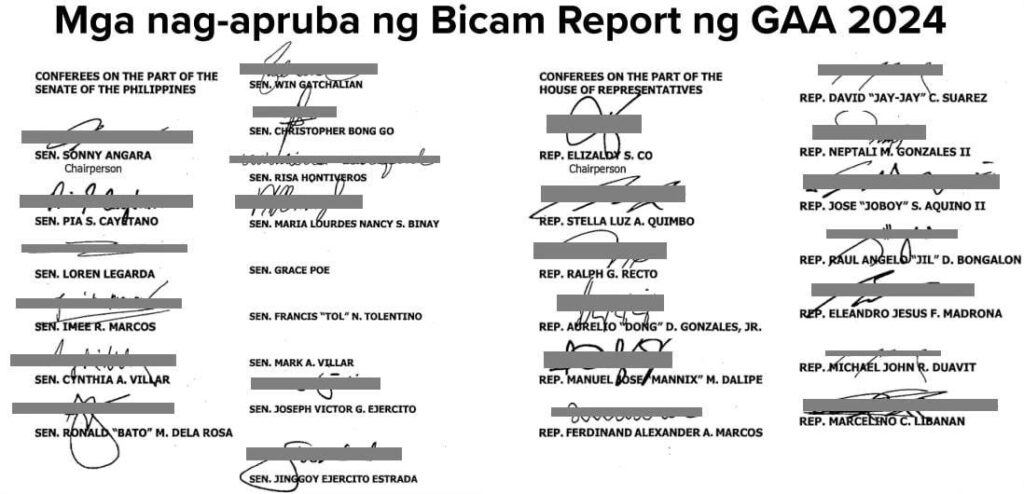As the Senate prepares to open the budget briefings on Tuesday (August 13), a critical eye is turned towards the proposed P257 billion allocations for flood control in the 2025 P6.352-trillion national budget. This figure, staggering in its magnitude, surpasses last year’s P255-billion budget for flood control, which itself exceeded the entire budget for agriculture. (The House of Representatives has its own schedule of the budget process.)
The proposed allocation for next year is P2 billion higher that this year’s budget. Specifically, Senate President Chiz Escudero noted that the P255 billion far exceeded the allocations for irrigation (P31 billion), the construction of new hospitals, and even the capital outlay budgets of the Department of Agriculture (P40.13 billion) and the Department of Health (P24.57 billion).
He also pointed out that the flood control budget surpassed the proposed 2024 budgets of entire departments, including the Department of National Defense (P232.2 billion) and the Department of Social Welfare and Development (P209.9 billion).
Despite such significant financial commitment, the National Capital Region (NCR) was left grappling with the aftermath of the Habagat and typhoon Carina-induced floods, raising questions about the efficacy of the flood control measures in place.
The recent flooding incidents last month exposed the inadequacies of the current flood management system. Unfortunately, the 5,500 flood control projects highlighted by President Marcos in his State of the Nation Address (SONA) are temporary stopgaps that fail to address the systemic issues plaguing the country’s flood control efforts.
Furthermore, Public Works and Highways Secretary Manuel Bonoan admitted in a Senate inquiry that the Philippines lacks an integrated flood control master plan, a blueprint that could coordinate and enhance the effectiveness of flood mitigation across the nation’s 18 major river basins.
Aside from the lack of a cohesive masterplan, there has been a call to expedite the passage of the proposed National Land Use Act which is designed to provide a framework for land use planning and management, addressing issues such as urban development, agricultural land preservation, and environmental protection.
Despite the seeming helplessness in addressing the issue, is there a glimmer of hope on the horizon that currently appears dim? Renowned architect and urban planner Jun Palafox, Jr. believes so. He urged the government to construct underground flood systems instead of erecting flood walls along riverbanks, arguing that ‘cold structures’ would ‘uglify’ the cities.
The case of a flood-free Bonifacio Global City (BGC) stands as a testament to the potential success of well-planned flood control measures. BGC’s resilience against flooding can be attributed to the underground water impounding project beneath Burgos Circle, a five-story deep cistern that collects and gradually releases floodwater into the Pasig River and Manila Bay. It can store over 20 million liters of water, equivalent to eight Olympic-sized swimming pools. This project not only mitigates flooding but also exemplifies the kind of forward-thinking infrastructure investment that can safeguard urban centers as advocated by Palafox.
Constructing underground structures is challenging, particularly in densely populated areas already filled with buildings. Bonoan revealed that one of the proposed sites for the underground infrastructure was beneath the flood-prone University of Santo Tomas (UST) on España Boulevard in Manila. However, the school’s administration did not agree with the plan.
I just wish that UST will reconsider its decision as such a project could serve as a critical component of a broader, more integrated approach to flood management, benefiting not just the university but the surrounding communities as well.
The upcoming congressional budget deliberations present an opportunity to redefine the country’s approach to flood control. It is imperative that the Senate and the House of Representatives thoroughly scrutinize the proposed budget, ensuring that funds are allocated not just for immediate relief but for the development of a comprehensive, long-term strategy that includes the creation of an integrated flood control master plan.
The time for piecemeal solutions is over. The nation calls for decisive action and a unified vision to address the challenges of flood control. As Congress reviews the budget, it must also demand accountability and results, ensuring that the substantial funds earmarked for flood control translate into tangible benefits for the Filipino people.
The future of the country’s flood resilience, among others, depends on the actions taken today. Let the deliberations on the 2025 budget be the turning point towards a flood-free Philippines.




